|
23rd February
Linlithgow
and Blackness
After
another very changeable week of weather, the prospects for Sunday were
actually very good - for the east. Having made
multiple visits to the
Lothian coast in recent weeks we decided to try Linlithgow Loch and
Blackness.
We
last visited
Linlithgow on September 15th
last year, so we were curious to see what we could find on a winter
visit. But first,
after an unfamiliar detour, due to a slip road closure
on the M8, we stopped off at Bathgate Morrisons where we enjoyed a
perfect breakfast (10/10: excellent). So after that very encouraging
start to the day we drove the few miles to Linlithgow .
We parked very near the Loch and straight away I spotted a pair of
Cormorants on the water. Also, a bit closer, a few Black-headed Gulls
were loitering, waiting for bread no doubt. As we moved around the west
side of the Loch, John pointed out a Moorhen hiding in the lochside
shrubbery. Just beyond it were a pair of Great
Crested Grebes
were fishing in the shallows.
| Cormorant |
Black - headed Gull |
Moorhen |
Great Crested Grebe |
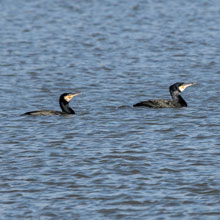 |
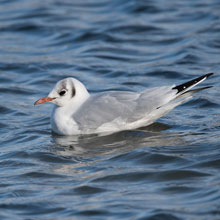 |
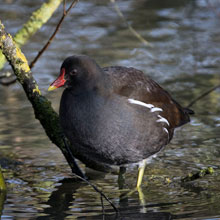 |
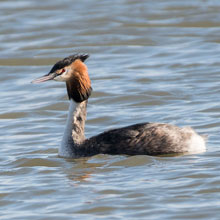 |
Along
the same stretch we met a pair of Tufted Ducks. The female was diving
for food but the drake seemed to have the female on
his mind. A pair of
Little Grebes were also diving in that area. Occasionally one emerged
with a little minnow in its beak. On the north side of the river we
came across some early-blooming flowers, miniature Daffodils and
Snowdrops, no doubt escapees from the gardens of the lochside
residences.
| Tufted Duck |
Little Grebe |
Dwarf Daffodil |
Common Snowdrop |
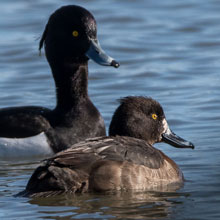 |
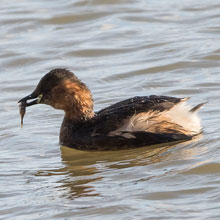 |
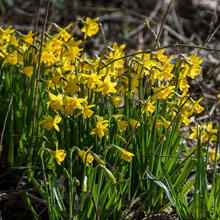 |
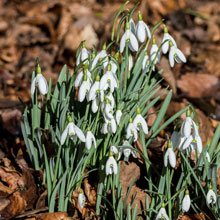 |
Below is the view of the
Linlithgow Loch and Palace as seen from the houses.
Just
past the houses I heard the dulcet tones of a Song Thrush. I scrambled
up onto the top of a 25m mound to investigate, but
the Thrush flew off,
but I discovered several Redwings on some high trees. On my descent off
the mound I also managed pictures
the first of some common
garden birds
we’d see, namely
a Chaffinch,
Goldfinch and Dunnock.
| Redwing |
Chaffinch |
Goldfinch |
Dunnock |
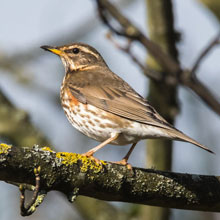 |
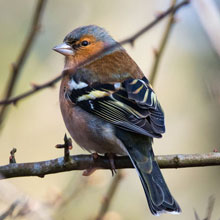 |
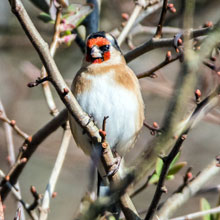 |
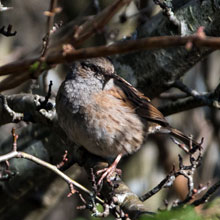 |
A
very brightly coloured Blue Tit was darting about the branches of a
pathside tree. Below it, by the reeds at the edge of the loch, a Coot
was chewing on water plants. We decided to re-trace our steps in order
to explore the south side of the Loch. We passed a
Blackbird probing
the damp grass for worms, unconcerned by passing walkers, primarily us.
We got closer views of
the Great Crested Grebes and Little Grebes, and as we reached the jetty
of the FAFA Anglers
Clubhouse ,
a
well-illuminated drake Mallard paddled towards us looking for bread.
| Great Crested Grebe |
Little Grebe |
Mallard |
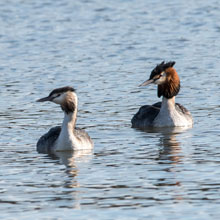 |
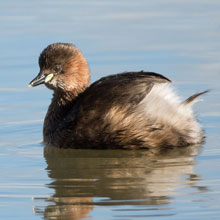 |
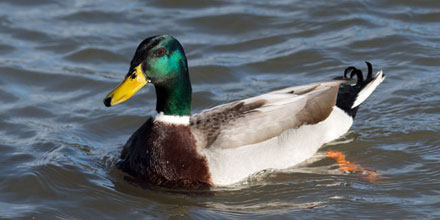 |
I
got nice portrait shots of a drake Tufted Duck, showing the colours in
its facial plumage, and a large and very forward white
domestic goose,
probably an Embden Goose ,
(see these birds in, “Pictures of the Week”,
below). A large cob Mute
Swan
approached us as I stood by the water’s edge
photographing the
goose, but it paddled off again when it realised we had no food.
On our
way back to the car park I snapped some pictures of a few Bullfinches
feeding on seeds that had fallen off of the trees
onto the short grass.
Up in the branches of one tree, a large Rook posed threateningly.
| Mute Swan |
Female Bullfinch |
Male Bullfinch |
Rook |
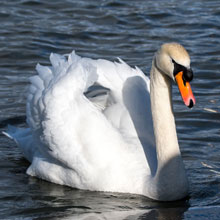 |
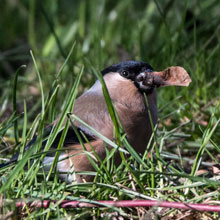 |
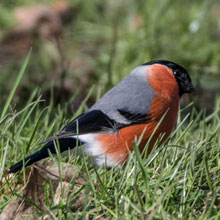 |
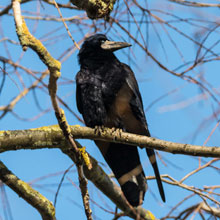 |
Next we drove about 5 miles east to
Blackness, a village on the edge of the Firth of Forth. We walked along
the castle approach
road, followed by a busy Pied
Wagtail.
|
Pied
Wagtail |
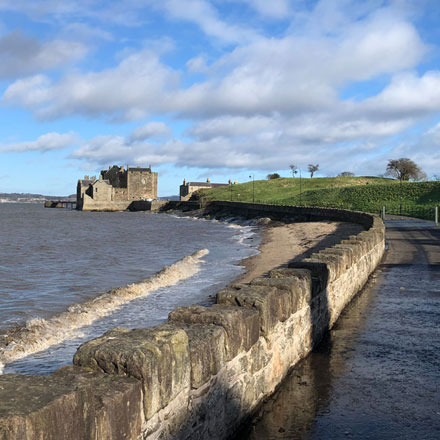 |
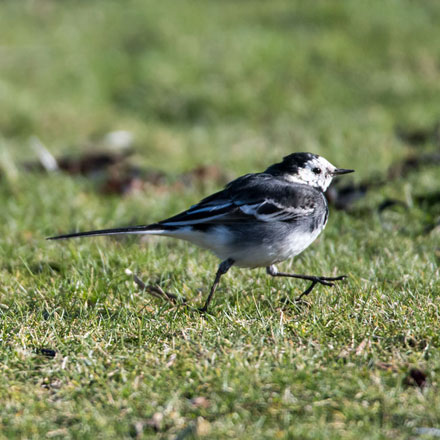 |
The
tide was almost fully in, but there were still exposed rocks in front
of the castle. We noticed there was bird activity around
the rocks, so
we trekked out along the shore for a closer look, taking care that
we didn’t become stranded by the tide. I was
pleased
to find a couple of
dozen Ringed Plovers and a similar number of Dunlins. I became aware of
movement at the edge
of my vision. It was a Redshank
“bobbing” on rocks
about 10m away. On the furthest rocks I noticed a single Curlew
surrounded
by other birds.
| Ringed Plover |
Dunlin |
Redshank |
Curlew |
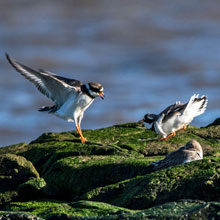 |
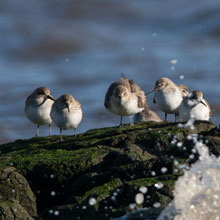 |
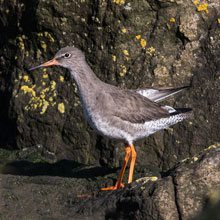 |
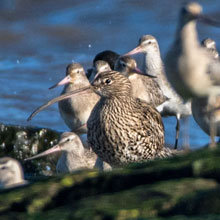 |
The
“other” birds were a few Oystercatchers and some Bar
- tailed
Godwits. But, as I was
photographing them, we watched a flock
of around 100 Godwits swoop in
and onto the already crowded rocks.
John
was of the opinion that our exit route from the promontory was
vanishing with each advancing wave, so we did the sensible
thing and
retreated smartly to the sea wall. From there we watched a Grey Heron
pass above the shore with several slow and
deliberate flaps of its wide
wings. Just before we left the magnificent 3-bridge panorama, I managed
our final capture of the
afternoon, a bold Robin sitting, almost begging
for a tasty morsel.
(see, “Pictures of the Week”,
below, for the Heron
and Robin pictures).
We
had plenty sunshine, for once, and both our sites were naturally
sheltered from the strong chilly wind, and both were
stunningly
beautiful. For these reasons we’d have enjoyed the trip even
if we
hadn’t seen such a wide variety of sightings - well,
perhaps
not.
However, it was with great satisfaction that we had our apple and
caramel Danish pastries and tea. Here’s hoping we
get another
sunny
outing next weekend.
Pictures of the Week
| Tufted Duck |
Emden Goose |
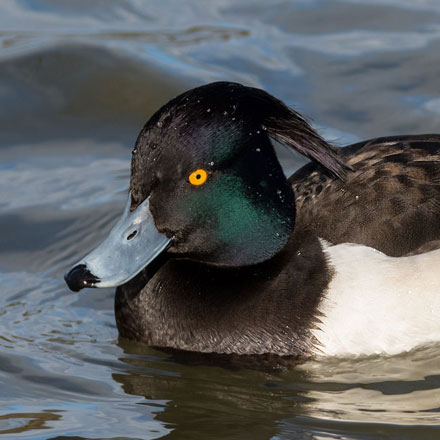 |
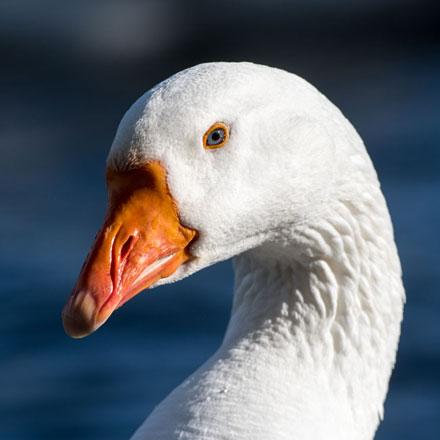 |
| Grey Heron |
Robin |
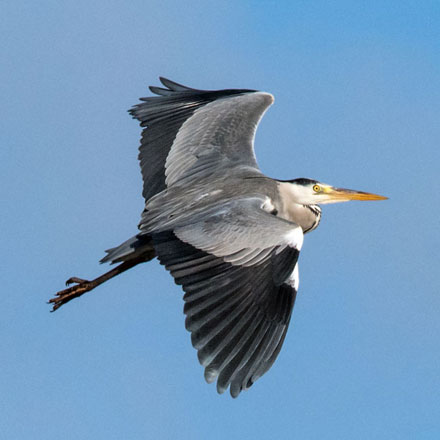 |
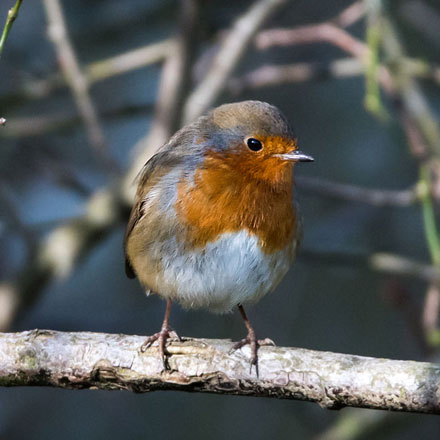 |
16th
February 2020:
North
Berwick and Yellowcraigs
For the second week in a row our Sunday outing was threatened by an
impending storm. “Dennis” was looming, although the
Scottish Central belt seemed to be getting off lightly compared with the
rest of the UK. The east was to have lighter winds and
less likelihood
of rain. A Tweet on Friday reported Purple Sandpipers and a
Red-throated Diver at North Berwick so we decided
we’d head
there.
So after our usual
breakfast pit stop in Dalkeith Morrisons (9/10: VG
apart from overcooked bacon and tattie scone) we drove
along the A198
to North Berwick. It was very windy, as expected, but very sunny. Below
is the magnificent view from the
West Bay Beach. To the right, the small
island of Craigleith and in the centre of the picture
is North Berwick Harbour, just
beyond which is the Seabird
Centre.
Our first sighting was of
a hungry (but aren’t they all) Herring
Gull feasting on some carelessly strewn toast. On the beach I
snapped
some shots of a foraging Redshank and a Carrion Crow probing the rocks
for shellfish. Eventually we reached the
Harbour, passing the RNLI
building, and St.
Andrew’s Old Kirk .
There were at least a half dozen Pied Wagtails active on the edge
of
the Misley Bay Beach. I got a few shots of some of these, among the a
nice flight shot (see, “Pictures of the Week”,
below).
| Herring Gull |
Redshank |
Carrion Crow |
Pied Wagtail |
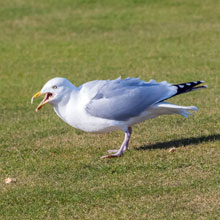 |
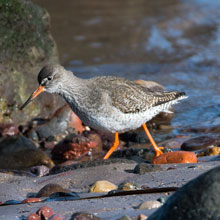 |
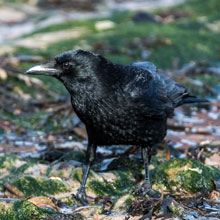 |
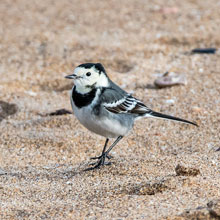 |
We moved past the
Seabird Centre onto the rock promontory beyond the
site of the old outdoor swimming pool (now a parking area). Prominent
on the rocks were many very flighty Starlings (see, “Pictures
of
the Week”, below). In the channel between Craigleith and our
rocky viewpoint we didn’t see many birds other than a few
passing
Eider, more Wagtails and Herring Gulls.
| Eider |
Pied Wagtail |
Herring Gull |
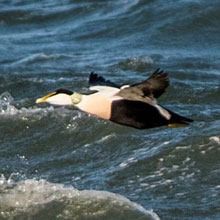 |
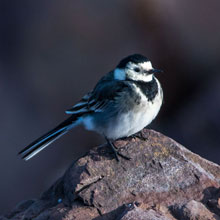 |
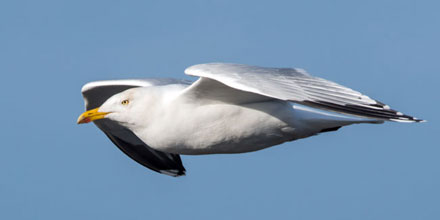 |
We watched the channel
for about an hour without even a glimpse of a
Diver or Sandpiper, so we retreated, disappointed but not disheartened,
to view the rocky east side of the promontory. Standing on the walkway
above the old changing cubicles we scanned the exposed
rocks. It
wasn’t long before John spotted a few Purple
Sandpipers
amongst the seaweed. They were being pelted by the wind-driven waves
but they always seemed to emerge unscathed. John then noticed a
surfacing winter plumage Red-throated
Diver about 50m from our stance. Mission accomplished as far
as North Berwick
was concerned, so we started to retrace our way back to the car. But
not before I had taken a photo of a Turnstone that made a brief
appearance on the edges of the rocks.
Flushed with success of
locating our target birds, we drove east to Yellowcraig, a site we last visited in January 2016. On the 200m
walk from the car park to the seashore we saw sure signs that Spring
wasn’t far away, as a few flowers were in bloom, namely
Snowdrop, White
Deadnettle and Coltsfoot . There were also large patches of
Alexanders, a member of the Carrot family.
| Common Snowdrop |
White Deadnettle |
Coltsfoot |
Alexanders |
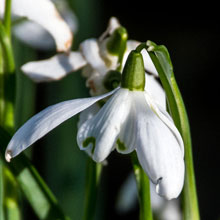 |
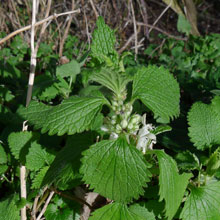 |
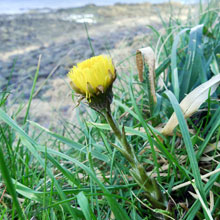 |
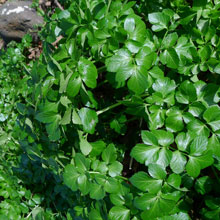 |
Below is the view of the
shore dominated by the island of Fidra,
which is reputed to have been the inspiration for “Treasure
Island” after Robert Louis Stevenson visited the island with
his
father, who had a hand in the design of the tower.
Many Herring Gulls, of
all ages, were present on the water and on the
many exposed rocks. At the water’s edge, well camouflaged
Turnstones picked their way through seaweed and pebbles, searching for
invertebrates.
| Herring Gull |
Turnstone |
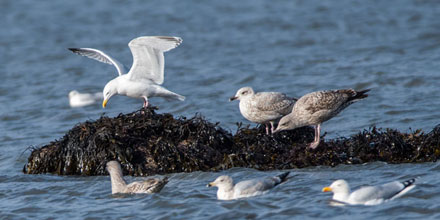 |
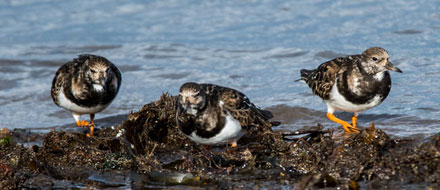 |
There were also many
Carrion Crows on the shore and in the air (see
also, “Pictures of the Week”, below). I noticed
that one of
the Crows had the distinctive plumage markings of a Hooded
Crow X Carrion Crow hybrid.
As I watched a particularly aerobatic
Herring Gull performing tricky
aerial manoeuvres, for no obvious reason, it was difficult not to presume
it was simply having fun.
Groups of Oystercatchers were dotted about
the rocks. They seemed quiet and restful for a change.
| Carrion Crow |
Hooded Crow x Carrion Crow |
Herring Gull |
Oystercatcher |
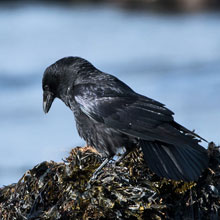 |
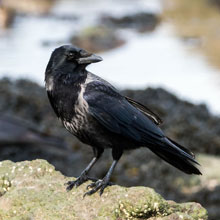 |
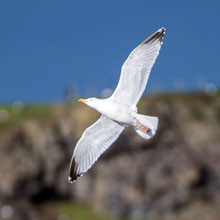 |
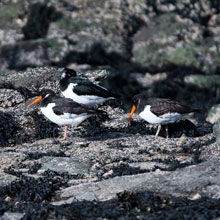 |
John noticed several
beached Common
Starfish
(also known as Sea Stars) amidst the seaweed. They seemed lifeless and
were
probably victims of our recent stormy weather. I managed a fairly
nice shot of three Eider as they passed us some 40m out. This
encouraged me to clamber our over the boulders to get some closer shots
of an Eider flock I’d spotted. As I made my way out I was
surprised by a Curlew that seemed to appear in front of me from nowhere
before taking off again when it noticed me. A beautifully lit
Oystercatcher standing in a rock posed for me for a time (see,
“Pictures of the Week”, below) before it too flew to
a less
threatening location. A green-coloured Shag flew past, reminding me of
last week’s sightings at Dunbar Harbour.
| Common Starfish |
Eider |
Curlew |
Shag |
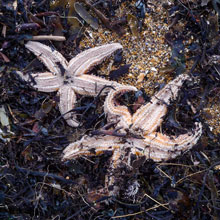 |
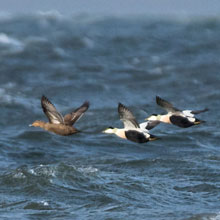 |
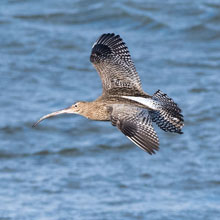 |
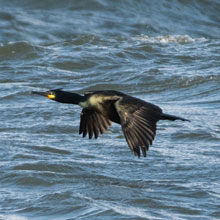 |
My final shots of the day
were both taken as I sat on my 3-legged stool
on my precarious rocky stance overlooking the charming
island of Fidra.
I photographed just 10 of what turned out to be a massive flock of Eider
that were bobbing up and down in the
stormy waters to the west of the
island. My final capture was an image of the Fidra
lighthouse
| Eider |
Fidra Lighthouse |
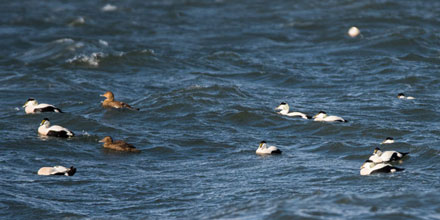 |
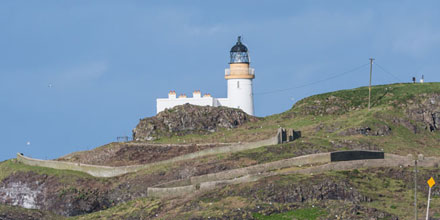 |
Although the weather was
windy, we had almost unbroken sunshine and no
rain. We also accumulated a pleasing number of
sightings. Our final task
was to down our Danish pastries and tea, which we managed with ease and
no small amount of enjoyment.
A great trip, but, please, no more storms.
Pictures of the Week:
| Female Pied Wagtail |
Starling |
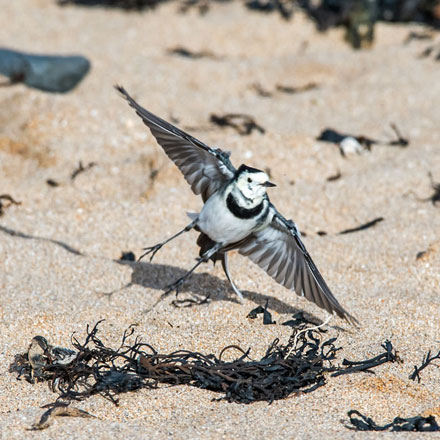 |
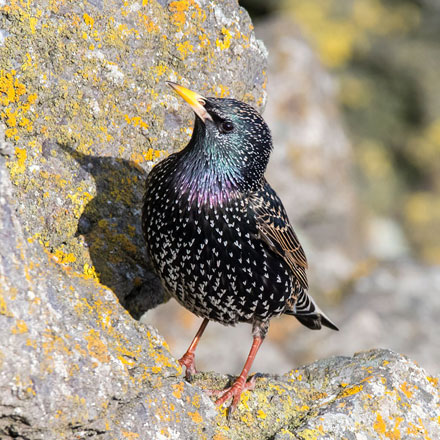 |
| Carrion
Crow |
Oystercatcher |
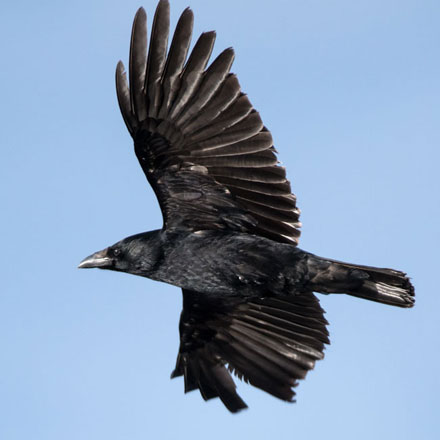 |
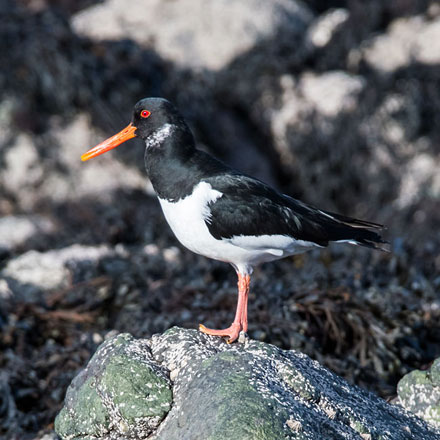 |
9th
February 2020:
Belhaven
Bay, Dunbar
and Barns Ness
From the middle of last week there were multiple warnings of Storm
“Ciara” which would bring storm-force gusts of
wind,
driving
rain, hail, snow and thunder. Those are not ideal conditions
for taking pictures. However, on Sunday morning we noted that the
west
coast would take the brunt of the bad weather so it was with hopeful
optimism that we set off for the Dunbar area, as far east
as we normally
go on our Sunday expeditions.
Over breakfast in
Dalkeith Morrisons (9.5/10: cold bacon but otherwise
excellent) we decided our best strategy was to concentrate on areas
which might be sheltered from the wind. We started at the west of
Dunbar, at Seafield Pond adjacent to Belhaven Bay. It
was dull and
gusty, but dry as we scanned the Pond. Most of its occupants were
Wigeon and a few Teal clustered on the far side
sheltering from the
wind. A few Tufted Ducks paddled nearer, and I came upon a single
Redshank on the edge of the water.
A Grey Heron also made an appearance
fishing at the far side on the pool.
| Female Tufted Duck |
Drake Tufted Duck |
Redshank |
Grey Heron |
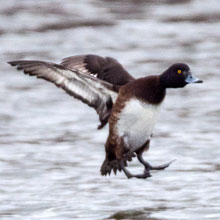 |
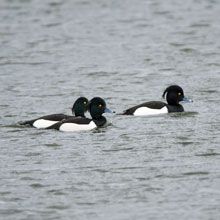 |
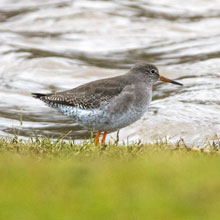 |
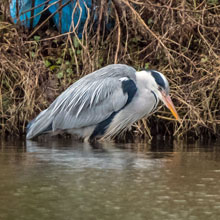 |
A flock of Curlew flew
overhead and onto an adjoining field. The light had
improved as the sky got much less cloudy. On the Bay a
larger flock of
Oystercatchers were jostling for position as the tide was
creeping in.
| Curlew |
Oystercatcher |
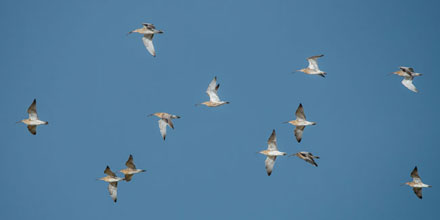 |
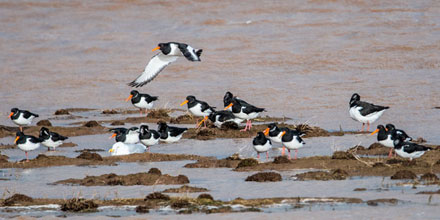 |
By the sea wall I found
a small flowering White
Deadnettle
that was about to get a fright, because frost was predicted.
Looking
towards Tyninghame Bay we could now see a large band of colours
- not quite a rainbow though. At the other side of the wall a
few
Wigeon were dabbling (see also, “Pictures of the
Week”’ below). When we returned to the car there
was a
lonely, thin Curlew
foraging on the grass.
| White Deadnettle |
|
Wigeon |
Curlew |
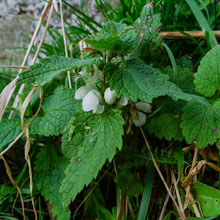 |
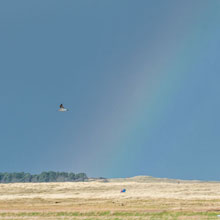 |
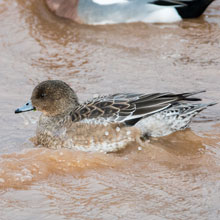 |
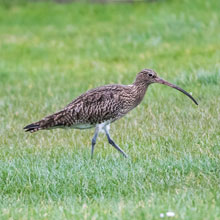 |
We moved into the town
and parked at Dunbar Harbour. There were a lot of gulls on the water,
mainly Herring
Gulls
of various ages.A Cormorant surfaced metres from where we were
standing, leading to my favourite picture of the visit.
(see
“Pictures of the Week”’ below).
| Herring
Gull |
1st Cycle Herring Gull |
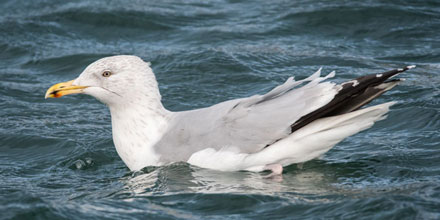 |
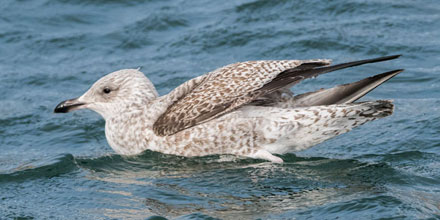 |
We were disappointed
that there were only a few Eider in the harbour,
as are there are normally quite a few in similar weather.
As we walked
around the harbour, passing a friendly wee
tabby cat
just before we crossed the footbridge. John pointed out a
juvenile male
Eider preening in the relatively calm conditions of the inner harbour.
We came across a Rock Pipit dodging gulls
and people, as well as having
to deal with the sharp gusts of wind.
| Eider |
|
Juvenile Eider |
Rock Pipit |
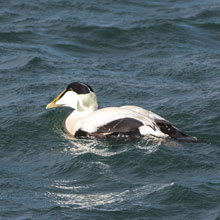 |
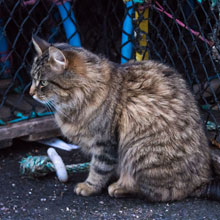 |
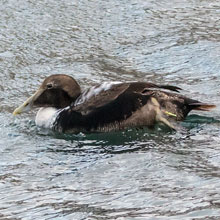 |
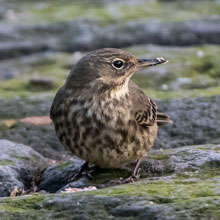 |
Below is a view of
Dunbar Harbour looking back from the harbour mouth.
A brief showery squall has just passed, leaving blue
sunny skies.
I peeped over the
harbour sea wall and was delighted to see four Shags
standing on the rocks (see “Pictures of the
Week”’
below). They were in early breeding plumage that seemed to be glowing
dark emerald green. I snapped another Shag clambering out of the sea
onto the same rocks, before spreading its wings for drying in the now
strong sunshine, assisted of course by the ever-present wind. Only a
few birds flew by, but I got a nice shots of an adult Herring Gull and a
Cormorant showing the grey neck feathers so prominent
in its breeding plumage.
With another shower
threatening, we decided to drive the short distance
east to Barns Ness, our final destination of the day. Being a much more
open location, the wind was much stronger, however the tide was almost
in and some Turnstones and Oystercatchers were feeding on piles of
seaweed cast onto the shoreline. They were picking their way through
the piles, dodging the occasional waves and gusts of wind. Further out
on exposed rock, waves were pounding a few determined Cormorants. I
managed to capture a shot of the scene just as a Dunlin flock passed. As
we trekked around the lighthouse we watched the wind blowing walls of
spray off of the breaking waves. Sunlight refracted by the spray
produced very attractive bands of colour. We caught sight of a male
Stonechat (see “Pictures of the Week”’
below) that
darted from the beach onto a dry hogweed stem for just enough time for
me to record the moment.
| Turnstone |
Oystercatcher |
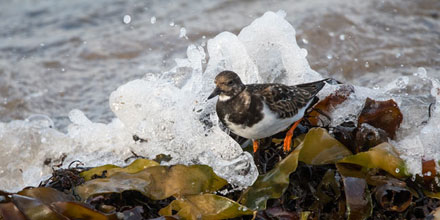 |
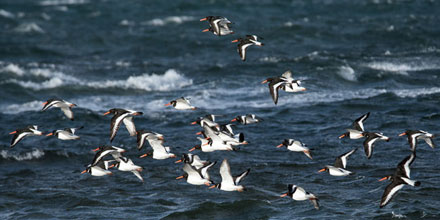 |
| Dunlin |
|
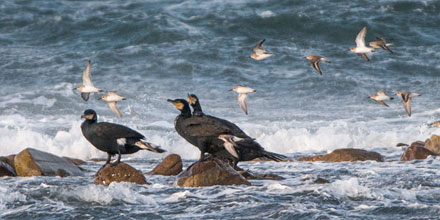 |
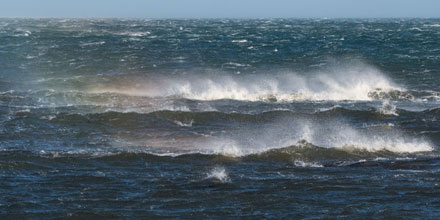 |
Below is a view of the Barns
Ness lighthouse as
seen from the eastern shore.
We passed a small flock
of distressed-looking Mallards that were
obviously unsettled by the weather conditions. We gave them a
wide
berth as we didn’t want to add to their discomfort. I was
rather
surprised to find a female Skylark
in grass near the shore at
the lighthouse. They are resident in the UK
throughout the year, but I don’t recall seeing them at Barns
Ness
during the winter.
Next I managed a photo of a couple of winter plumage Knot
sunning themselves as they sheltered from the wind on rocks just
off the
shore. Our final capture of the day was of a Great Black-backed Gull
cruising through the air, seemingly relishing the
wild winds.
| Mallard |
Female Skylark |
Knot in
Winter plumage |
Great Black - backed Gull |
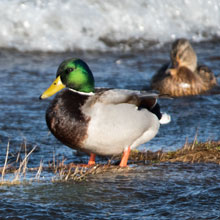 |
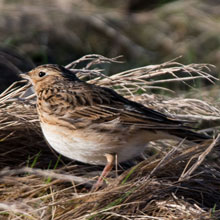 |
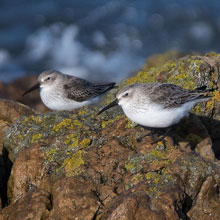 |
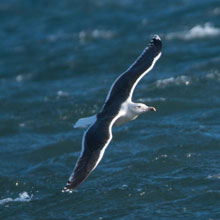 |
We found our own shelter
in the car at the end of an exhilarating and
rewarding day. We reflected on our haul of sightings, and
agreed that
Storm Ciara had been kind to us since we had seen plenty of sunshine
and the winds had been tolerable. My favourite
moments were the seeing
the surfacing Cormorant (as I’ve said), the green-feathered
Shags
and the unexpected Skylarks.
Hopefully we’ll get calmer
weather
next week (but as I write the predictions don’t look good).
Pictures of the Week:
| Wigeon |
Cormorant |
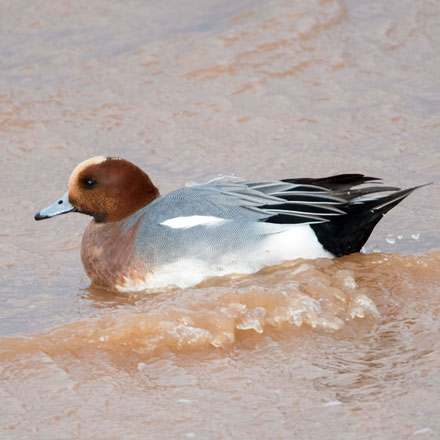 |
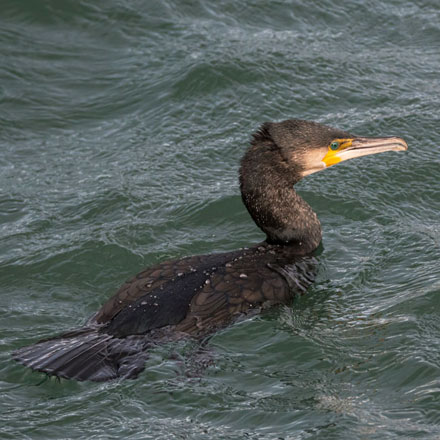 |
| Shag |
Stonechat |
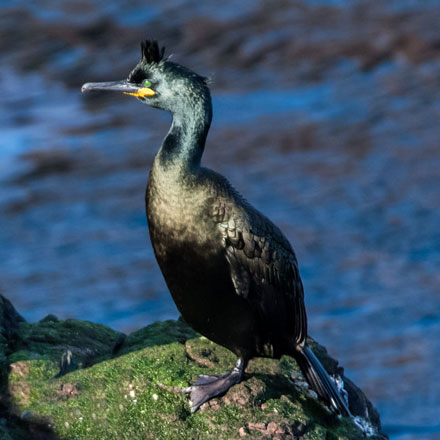 |
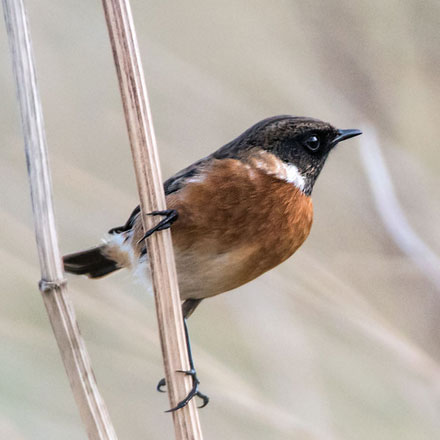 |
2nd February
2020:
Figgate Park, Fisherrow, Musselburgh and Port Seton
The weather prediction
for Sunday was depressing. There was to be rain across Central Scotland
lasting the whole day.
| Cloud Cover |
Rain forecast between
10.00 a.m.- 11.00a.m. |
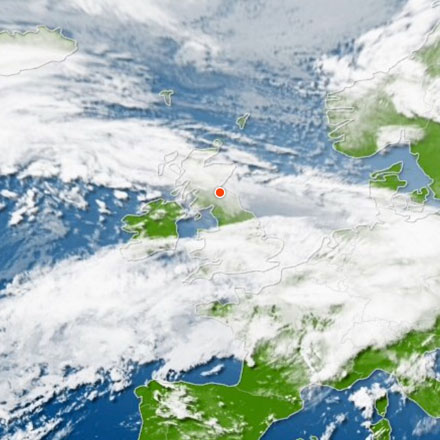 |
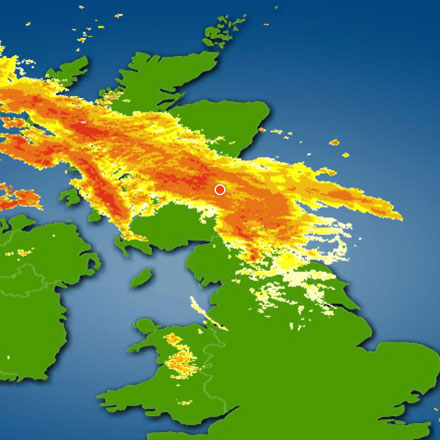 |
I decided we’d
go east but since the light would be poor,
we’d concentrate on places where we were likely to see birds
at
close
quarters. So after another fine breakfast in Dalkeith Morrisons
(10/10:excellent) we started our quest at Figgate Park, on the east
end
of Edinburgh. The rain had stopped and the light seemed to be
improving. Our first sighting was of a Treecreeper
(see
“Pictures
of the Week”, below) near the park entrance. At the boardwalk
viewing platform I snapped a few pond “regulars”,
a
Moorhen, a pair of Mallards and a cheeky wee Great
Tit making its
“teecha-teecha” call from a high nearby branch.
| Moorhen |
Mallard |
Great Tit |
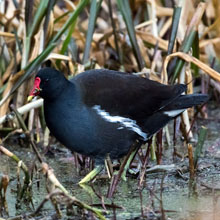 |
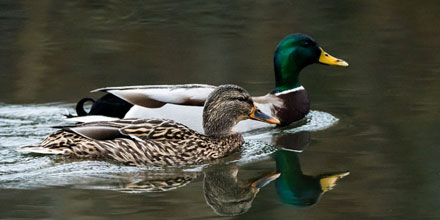 |
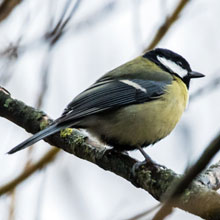 |
A few Goosanders were
gliding across the water, occasionally diving for
fish. Also, a pair of Mute Swans were getting very friendly, nearly
making a “love heart” pose as they repeatedly
dipped their
heads rather ceremoniously in the water. A few Canada Geese were
exploring the pond edges, some coming very close.
| Female Goosander |
Drake Goosander |
Mute Swan |
Canada Goose |
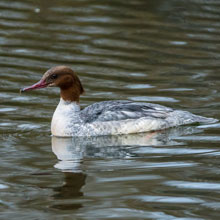 |
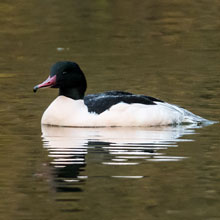 |
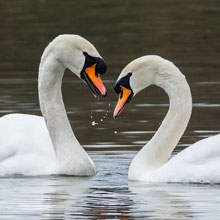 |
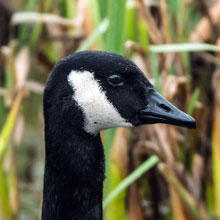 |
John noticed an easy to miss Grey Heron hiding
on branches on the
island. We had been on the lookout for Otters that had been
seen just
before we’d arrived, so we were excited by a ring of water
waves
spotted at the periphery of our vision. It turned out to
be a small
Cormorant. As we walked around the pond I got some nice shots of a
Robin in bushes near a patch of Common Snowdrops.
| Grey Heron |
Cormorant |
Robin |
Common Snowdrop |
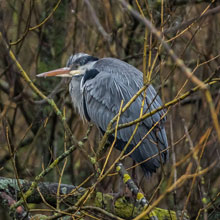 |
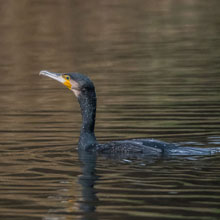 |
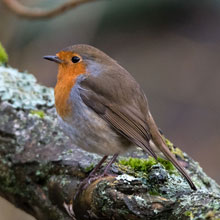 |
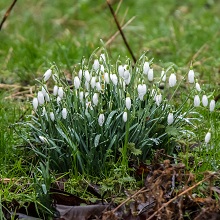 |
Also near the path, a
small flock of twittering Goldfinches flew between
the trees. A lost-looking Redwing stopped briefly on low
branches before
darting off in a panic. On the grass I spotted a low, ragged garden
“escapee”, probably Camellia
Japonica. As we
made for
the
car I snapped some Feral Pigeons around the Pond. Also, I found a patch
of lovely yellow-flowered Winter
Aconite
(see
“Pictures of the
Week”, below) beneath young trees near the railway line.
| Goldfinch |
Redwing |
Camelia Japonica |
Feral Pigeon |
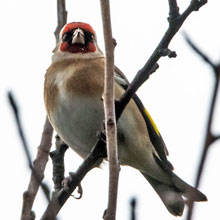 |
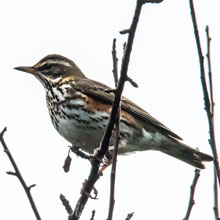 |
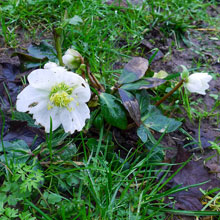 |
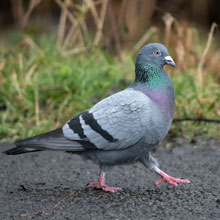 |
We relocated to
Fisherrow Harbour in Musselburgh. The tide was low and
the harbour floor was fully exposed. Small waders,
Redshanks and Dunlin,
were feeding in the damp mud. There were also a few Oystercatchers. A
Pied Wagtail appeared on the
harbour wall and I managed a few shots.
| Redshank |
Dunlin |
Oystercatcher |
Pied Wagtail |
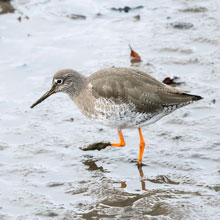 |
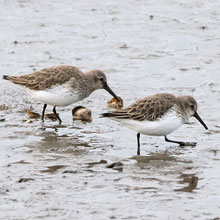 |
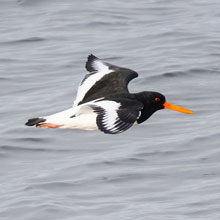 |
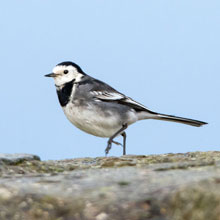 |
I caught a nice flight
shot of a large Herring Gull as it took off from a
lamppost. We made the return journey around the harbour edge where I
noticed a Dunlin getting right stuck in to the mud. A flock of
Bar-tailed Godwits that had been feeding on the shore to the west of
the harbour, were put up by some dog walkers. They flew past the
Harbour, providing an excellent photo opportunity.
| Herring Gull |
Dunlin |
Bar - tailed Godwit |
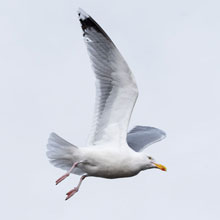 |
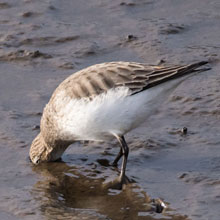 |
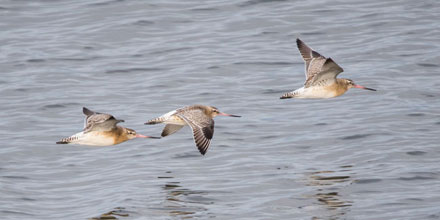 |
Next we drove along to
the shore road to the town centre and eventually
parked by the River Esk near the Millhill car park. As we
alighted the
car, a Great Tit was calling from a garden bush. We strolled along the
east side of the river past quite a few Herring
Gulls that were
gathered at the island. I noticed a striking 3rd year Herring Gull
showing the adult plumage beginning to form. For
no apparent reason,
the sizeable flock of Canada Geese that had been grazing further
upstream, flew low along the river, once
again providing a great
opportunity for flight shots. Among the flying flock was the Canada X
Greylag Goose I had photographed
earlier (see “Pictures of
the
Week”, below). On the way back to the car I noticed Crocuses
that
were starting to flower.
| Great Tit |
3rd Cycle Herring Gull |
Canada Goose |
Crocus |
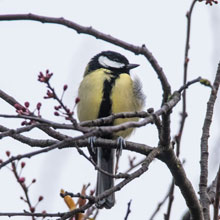 |
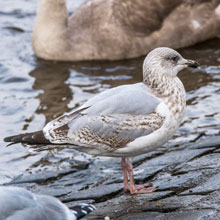 |
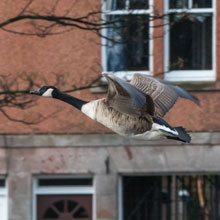 |
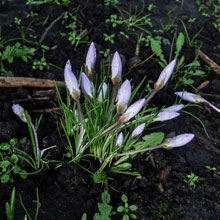 |
Our final port of call
was the harbour at Port Seton. Below is a view
east showing a brightly sunlit Gosford House with
North Berwick Law
prominent in the background.
We walked around the
harbour which just beginning to fill with water. A
Great Black-backed Gull was paddling in the shallows.
On a street
lamppost a Starling was singing it’s head off, the iridescence
of
its plumage highlighted by the now strong sunshine.
Near the harbour
mouth we watched a juvenile Herring Gull begging its parent for food.
The adult obliged by digging out of
fishing boat netting what looked
like a Starfish, which the juvenile rapidly downed (see
“Pictures
of the Week”, below).
| Great Black - backed Gull |
Starling |
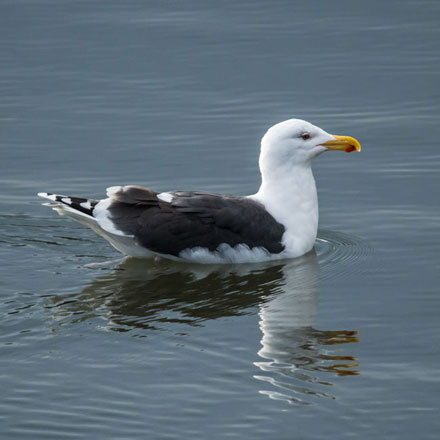 |
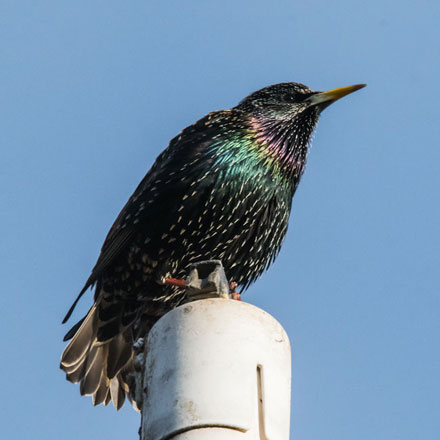 |
There were Herring Gulls
perching on the harbour floodlights, making an
interesting composition. John noticed a Red-throated
Diver diving about
100m offshore. We hoped it might come further in, but it
wasn’t to
be. On our way out of the harbour I was quite
surprised to find a
flowering Sea
Mayweed nestling by a
capstan. Perhaps its late flowering
is a symptom of a mild (so far) winter.
Our final sighting was of a lone
Curlew wandering the shore by the Wrecked Craigs.
| 3rd Cycle Herring Gull |
Red - throated Diver |
Sea Mayweed |
Curlew |
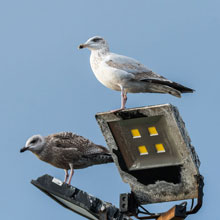 |
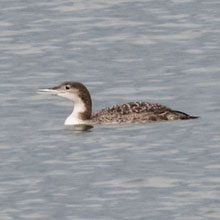 |
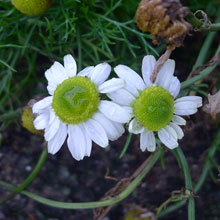 |
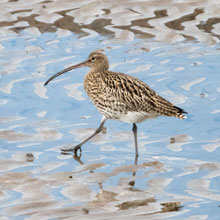 |
We were delighted with
our many and varied sightings. The unpromising
weather didn’t hold us back. The birds seemed to be
coming at
us
thick and, some literally, fast. We repeated last week’s
pastry,
chocolate and cream eclairs, washed down with
strong tea.
I’ve
just seen the likely weather forecast for next week. It’s to
be
stormy. Let’s hope it misses Central Scotland.
Pictures of
the Week:
| Treecreeper |
Winter Aconite |
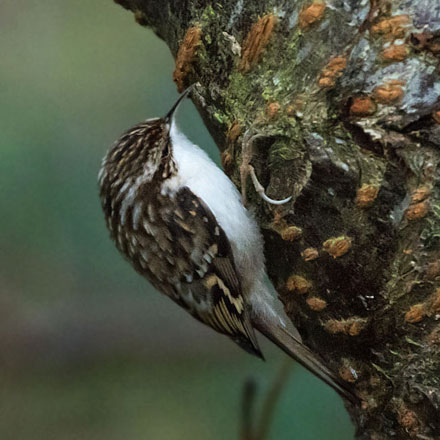 |
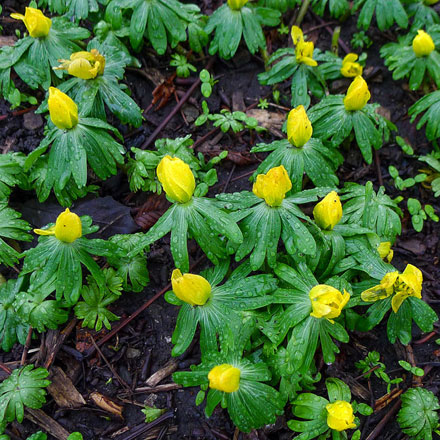 |
| Canada X Greylag Hybrid |
Herring Gull |
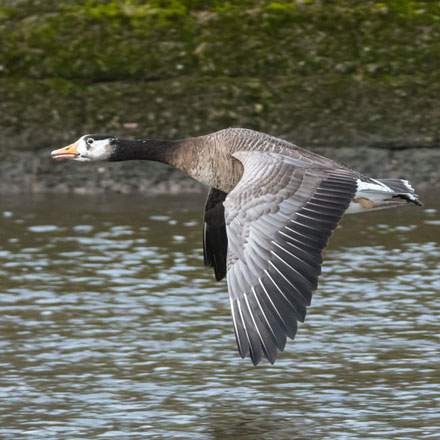 |
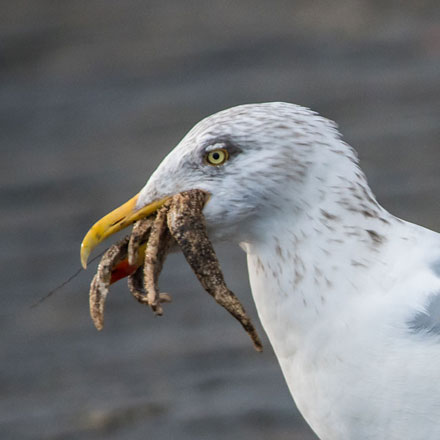 |
|

